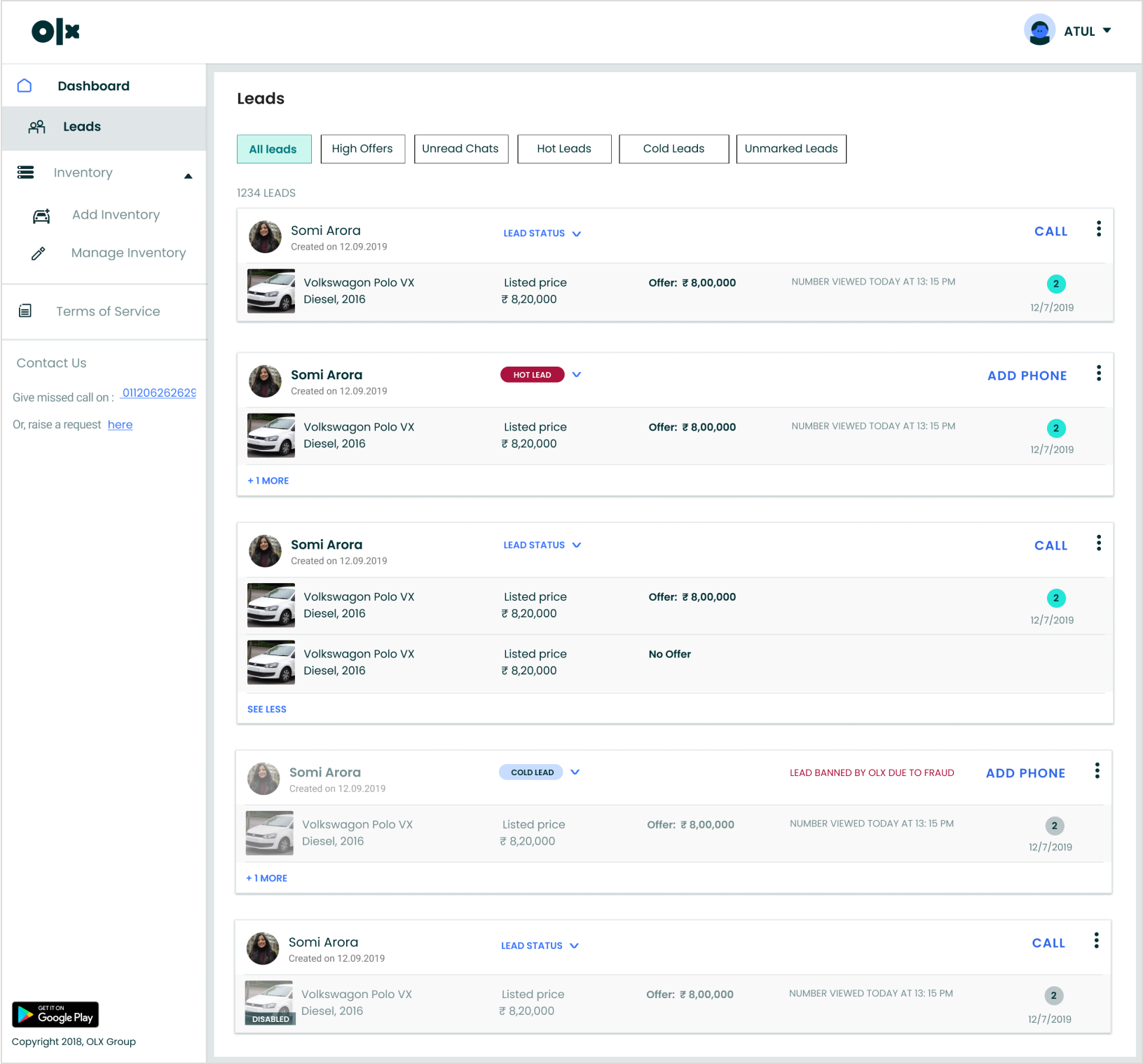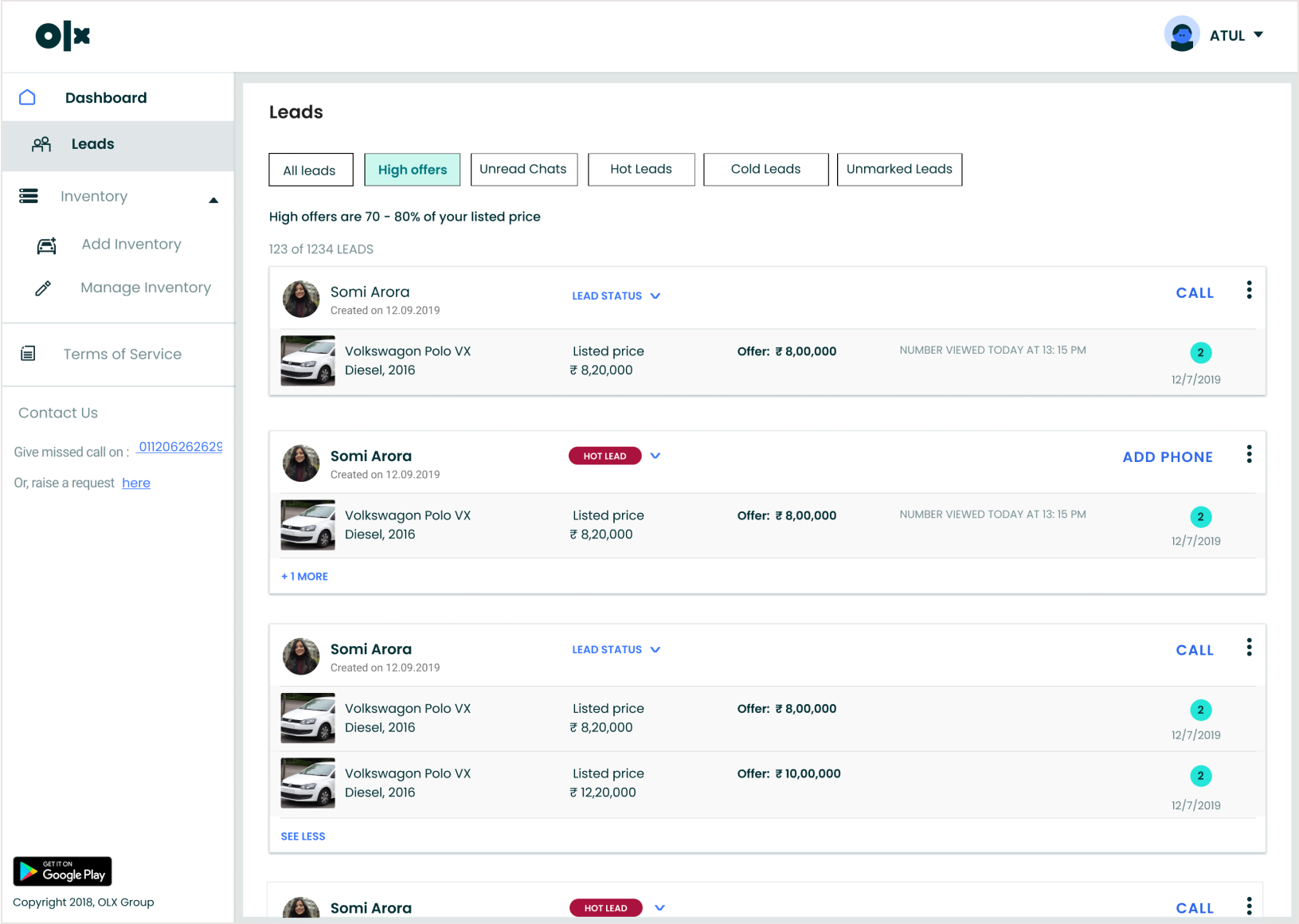Research x Experience design x Prototyping x User testing

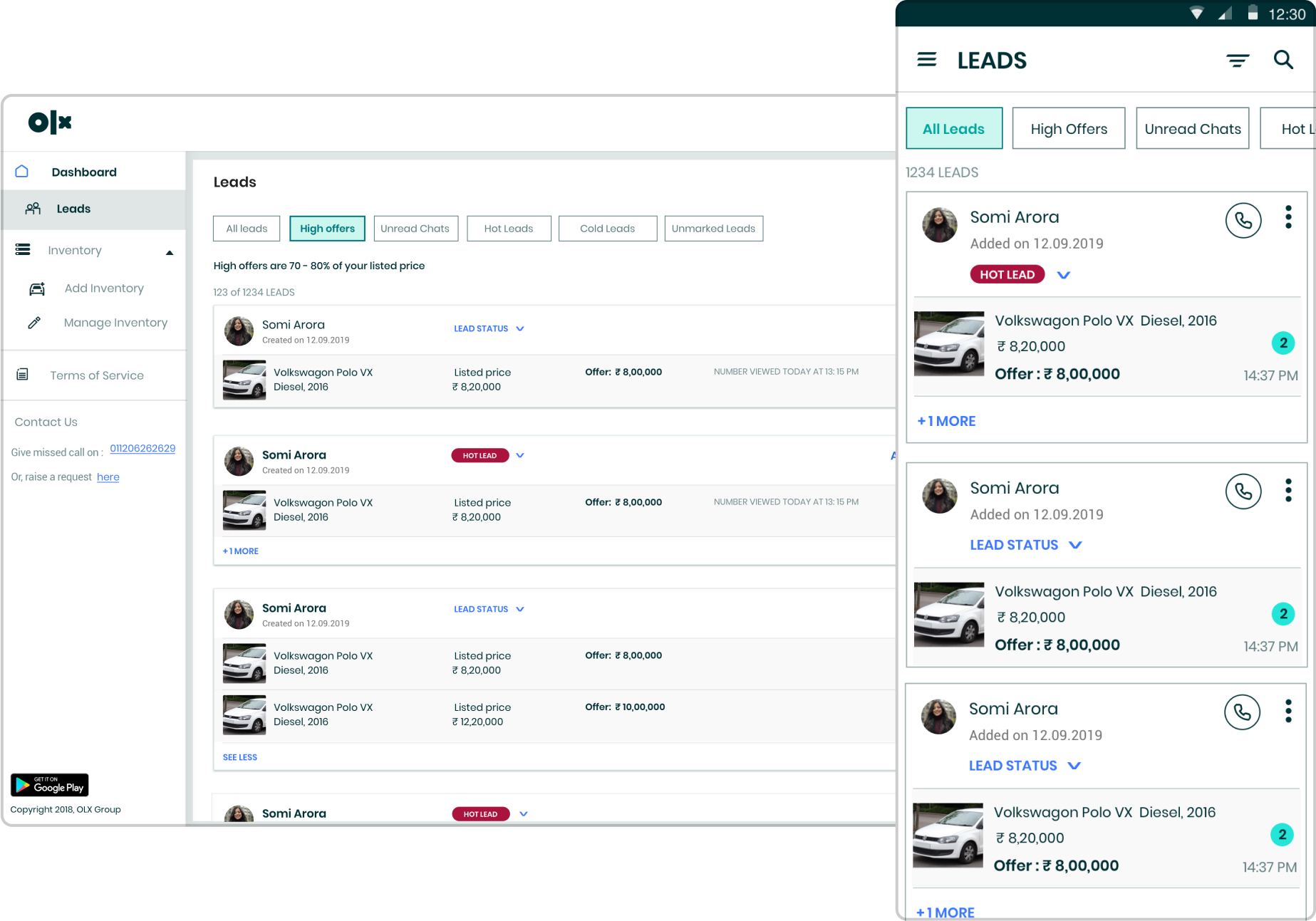
Project brief
OLX business is a B2C tool to enable business dealers associated with OLX to post and manage their inventories online. The existing B2C application enabled car dealers to post their inventories online but the entire lead management process was manually executed which led to a lot of back and forth and loss of potential leads.
I led the B2C vertical in design and was the principal designer for this project across Android, iOs and PWA ( Progressive web app). I was responsible for driving the entire design process starting from research, identifying the key pain points , defining the scope, the final handover and execution with the product and development teams across all channels.
In order to dive deeper into the lead management experience and understand how leads were being managed by dealers, I started by conducting semi-structured interviews with OLX car dealers in tier 1 and tier 2 cities across India.
Three cities of Delhi, Surat and Gurgaon were finalised for ethnographic research. The intent of the research was to understand how car dealers currently acquire and manage their all their leads and also observe how they differ based on the city and dealership setup.
18 car dealers
6 dealers per location
Cars per dealer
Research Objectives

Car showroom with second hand vehicles on display

Inventory list being maintained on paper

Lead classification on excel sheets
The car dealers allowed us a peek into their dealerships, inventory and the entire process of managing and converting leads.
Shadowing was also used as a research tool to observe the conversation between dealers and their clients and observe their day to day management.
The research data was analysed by creating affinity maps and derving key insights by grouping relevant information together. An elaborate journey map was also created to dive deeper into the insights gathered from the field. This was a collaborative activity, lead by design, involving project manager and data analyst to come to a common understanding of the user’s end to end lead management journey.
In this activity, different touchpoints at various stages of the journey , along with pain points and opportunities were mapped. The journey was envisioned from the perspective of an aspirational seller, who emerged as our primary persona after the ethnographic research.
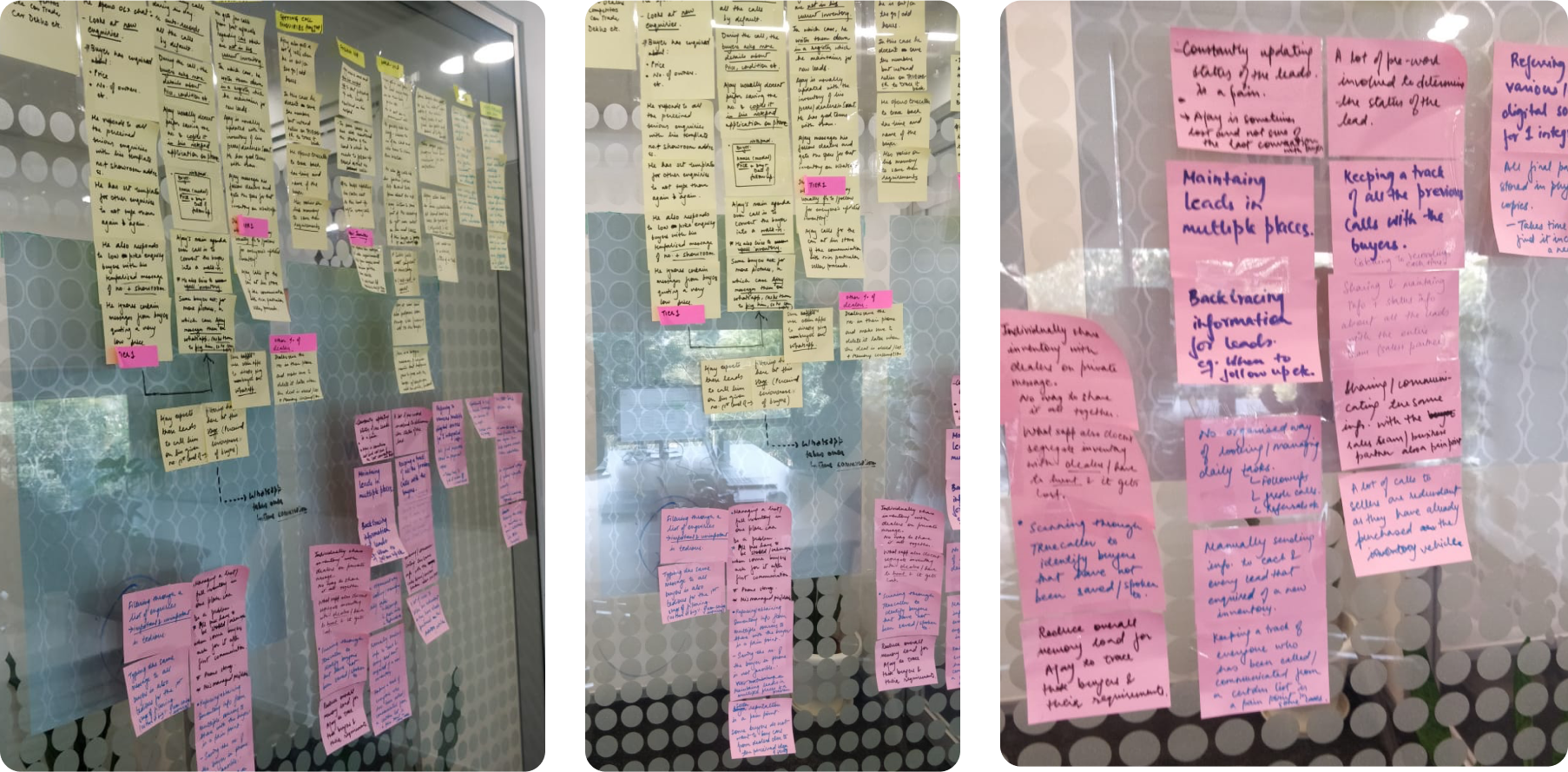
Affinity diagramming to form logical groups.
Primary user persona
Ajay, the Aspirational seller was looked at as our primary persona after the research, The goal was to lay focus on the primary user base which comprised of medium sized dealers across tier and tier 2 cities. It was also noticed that if we solve for the pain points of the aspirational seller, it will automatically benefit dealers with low and high inevntories to also manage their leads better.

The Aspirational seller
Ajay mittal
Inventory size : 15-30 cars
Employees : 3-5
Ajay is a second hand car dealers who runs his dealership from the city of Gurgaon in India. He runs a medium sized business with 15-30 cars in his inventory and 3-5 employees working for him at his dealership.
Ajay is fairly tech savvy and uses his mobile 80% of the time to post and manage his inventories. Lead management on the other hand is primarily done with the help of notepads, excels sheets and some thrid party mobile applications like whatsapp and notepad.
Some key pain point of Ajay while managing leads:
A journey map was created to understand the relationship between different lead management stages and the pain points that dealers face at each stage of management. The goal was to also map different channels that were used to accomplish these tasks and eventually enable dealers to easily manage tasks without using multiple support systems.

Stages of lead management
Based on the quantitative research , key stages of lead management were identified.
1. Lead Generation
2. Lead Classification
3. Lead Distribution
4. Lead Nurturing
5. Inventory Sales
6. After sales service
Following are some critical insights derived from the qaulitative research.
1 Filtering through a list of enquiries - important and unimportant is tediuos.
Dealers get a lot of enquiries through multiple sources and it is hard to keep a track of which leads were serious and which were not serious.
2 Typing the same message to all the buyers is tedious for the 1st stage of filtering.
Dealers dont know the seriousness of buyers and have to spend the same time of effort interacting with all of them.
3 Reduce overall memory load for the user to trace the buyers and their requirements.
Dealers have to keep a track of their last conversation with a specific buyer. They use multiple channels and its hard to manage leads across all of them.
4 Keeping a track of everyone who he has followed up with via calls, messages is also a pain point.
The dealer check marks all the leads which he has already spoken with and has to keep going to their notepads to follow up with information.
5 A lot of pre work is required to determine the status of the lead.
The user listens to previous recordings,to keep a track of where he left off the conversation.
6 No way at the moment to keep a track of the seller experience from the buyers.
There are many opportunities to improve overall seller reputation in order to get better leads in future.
All the opportunities were prioritised based on the business goals, criticality of the problem and time taken to achieve the task. The prioritised opportunities were then divided into phases of project rollout. Brainstorming sessions were held to get different ideas on board. The goal was to reduce multi-tasking for the seller and allow him to segregate all leads efficiently to be able to follow up with leads and sell the inventory faster.
User workflow
A high level workflow was created to understand key use cases that would be accomodated in the concept design. Leads from olx chat, directs calls and direct walk-ins were tied together in the workflow to understand how they can be integrated into one lead management platform.


After some ideation sessions, low fiedlity concept screens were created to test with dealers and validate the need and usability of the features introduced.
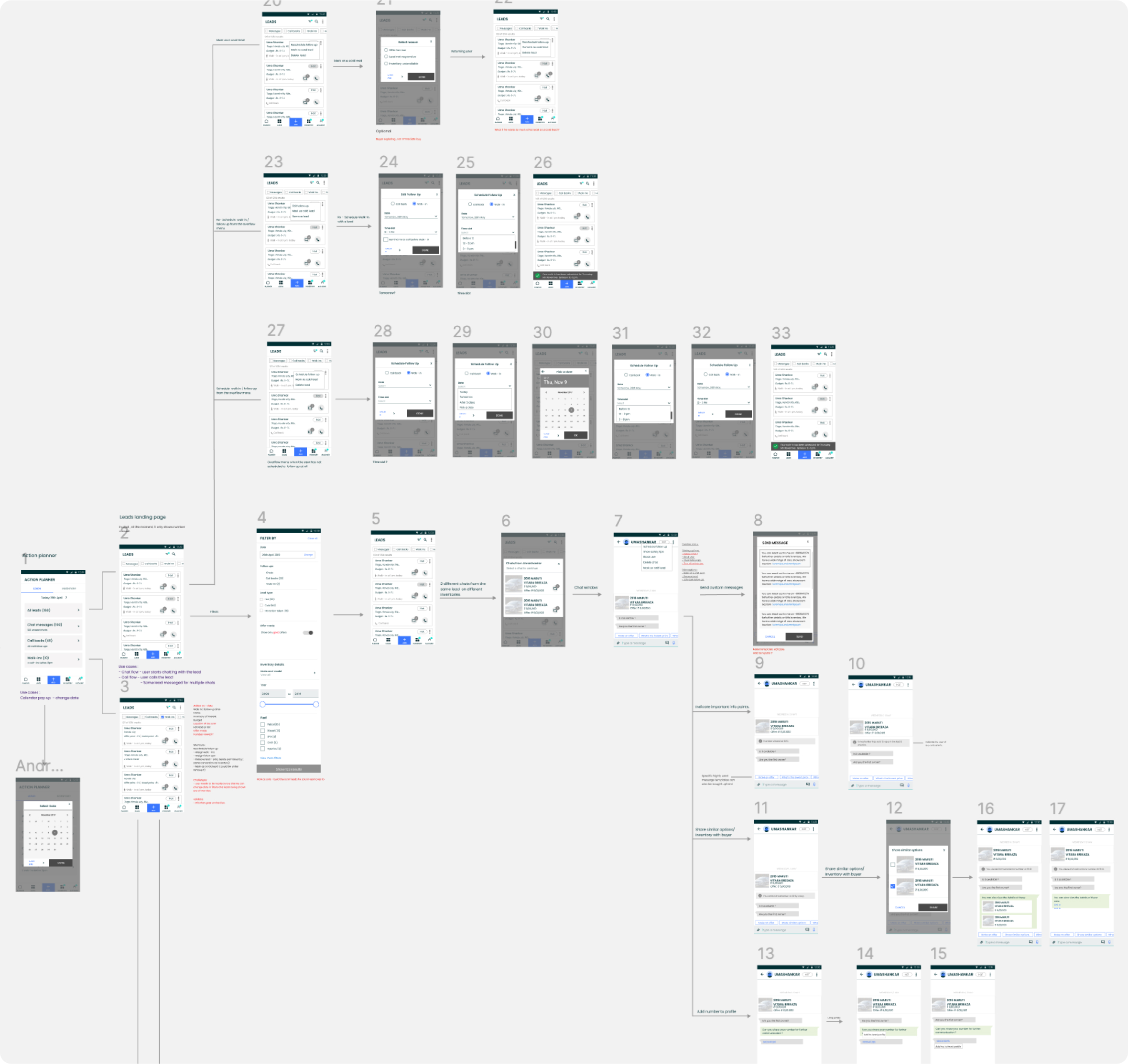
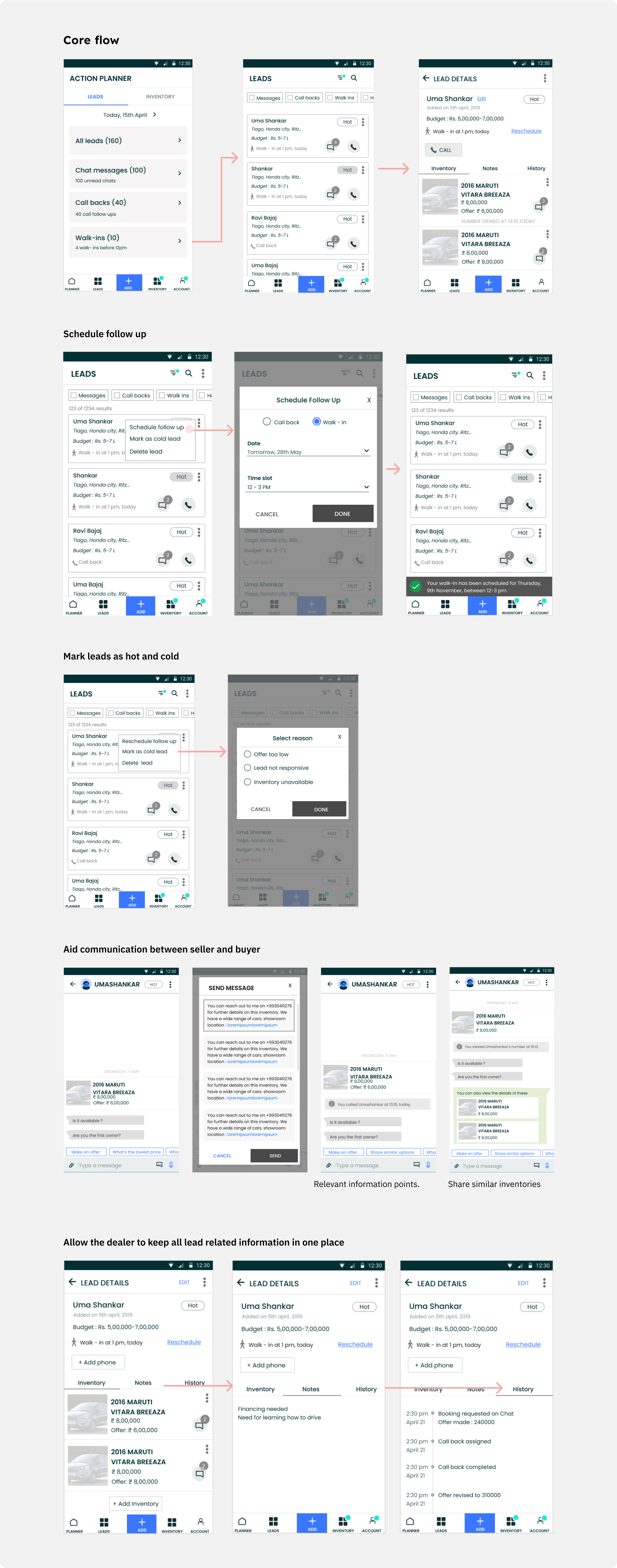
The high fidelity mocks were user tested with 8 car dealers to gather their feedback and observe how they would translate the designs into their day to day work. The user tests were also our second interaction with users during this project and hence they were also used as a way to gather more feedback and insights on the lead management process.
User testing takeaways
After the user tests, we sat with the product and business teams to scope down the designs into phases to progressively onboard users to a completely new feature in the application.
The first phase consisted to key features that would allow the seller to segregate and classify OLX leads in order to make the follow up process more efficient.
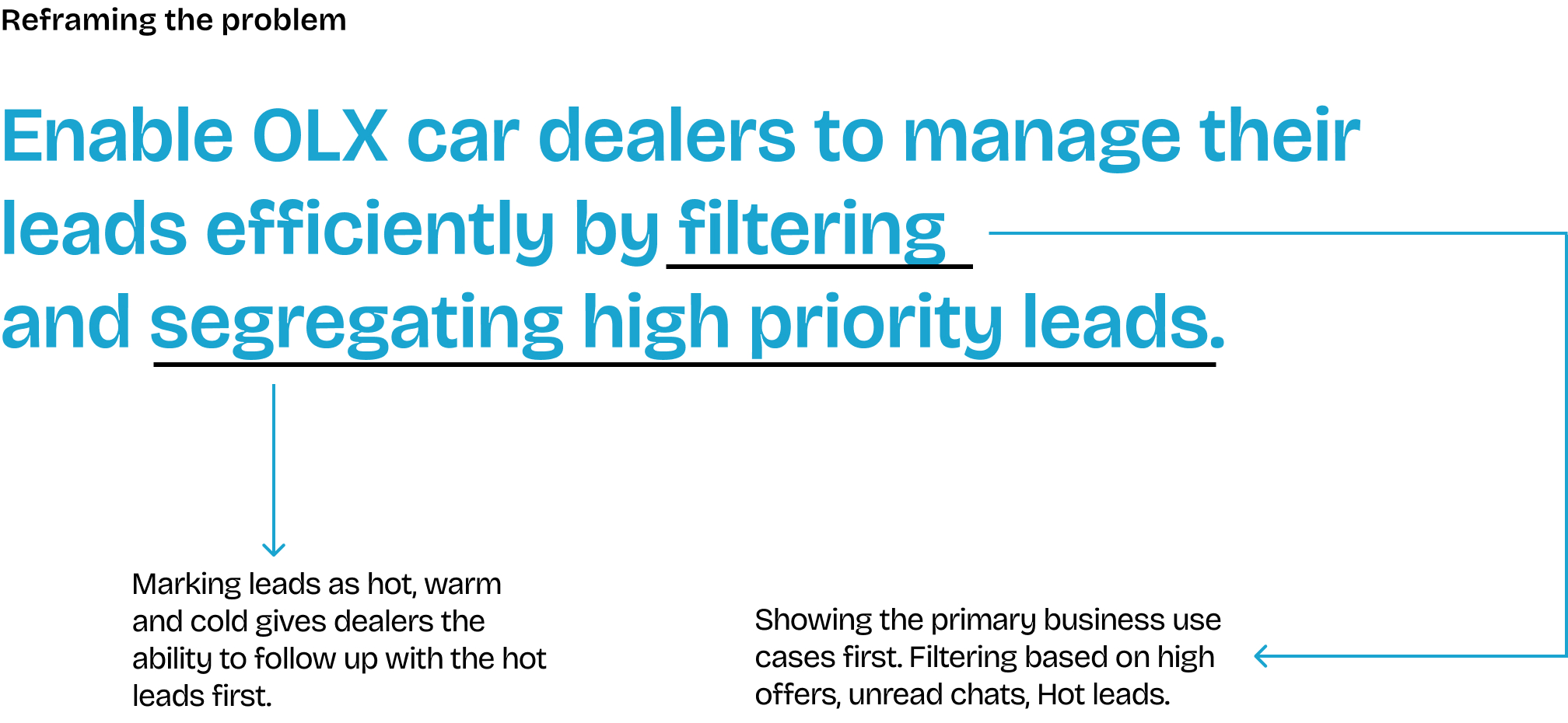
After multiple discussions with the business stakeholders and discussions within the product team, we decided to keep the phase 1 MVP limited to allowing dealers to segregate leads on OLX in order to reach out to the relevant ones faster. We also wanted to user phase 1 release as a way for us to gather deeper insights into the user behaviour and incrimentally upgrade the application.
Key features

Core flow - segregating good offers by marking them as hot/ warm.

Marking as a cold lead
Some specific touchpoints were identified to gather information to be able to automate this data in the future.

Key filters - High offer, unread chats
High offers were 70-80% of the listing price of the vehicle. This value was finalised after gathering data on the final selling price of second hand cars on OLX and also first hand inputs from sellers affiliated with OLX.

Blocked, distables states.
Blocking leads and reporting fraud were introduced to enable dealers to filter out fradulent and unwanted leads from their database. This would also build more trust between dealers and OLX in the long run.

Lead management was also introduced as a feature in the progressive web app that was occasionaly used by dealers to upload and manage inventory. Now they can also manage their leads on PWA.
